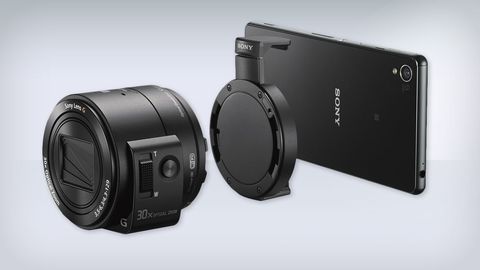Why you can trust TechRadar
As we've come to expect from most Sony compacts of late, the QX30 puts in a good performance in most areas of image quality.
Colours directly from the camera are bright and punchy, while its high pixel count results in reasonably detailed images. That said however, if you examine images shot even at low sensitivities, such as ISO 100, you can still see some examples of image smoothing - the overall impression of detail is excellent though.
Automatic white balance copes fairly well with mixed or artificial lighting, but if the camera is struggling to get the colours right, you can also change to a more appropriate white balance setting in aperture priority or shutter priority mode. You can't change the metering setting, but the camera's all-purpose setting copes reasonably well in the majority of circumstances.
As you move through the higher values in the sensitivity run, such as ISO 800 you start to notice more noise creeping in. It's not until around ISO 1600 that it starts to become problematic however, and I'd only really recommend using ISO 3200 if you're desperate.
Within the PlayMemories app, there's no offer of digital filters, or even panorama mode, so it's a little bit limiting to creative photographers on the one hand. On the other, you have a world of Android and iOS editing apps (including Instagram) to alter the look of your shots after you have taken them at your disposal. It's a shame not to see panorama mode, though.
As I've already mentioned, shot-to-shot times are pretty slow thanks to the speed of the app, but at least focusing is pretty quick in the majority of circumstances, though if you're shooting in particularly low light you'll find it takes a little longer for the camera to lock on to the correct subject.
With it's headline feature being its 30x optical zoom, it's important that this performs well. At the furthest reach of the telephoto optic, images are clear, while the optical stabilisation does a good job of keeping images blur free. But it's better if you can use the camera on some kind of stand or resting place when shooting using the optical zoom, since it can be a little unbalanced when attached to a phone.
Amy has been writing about cameras, photography and associated tech since 2009. Amy was once part of the photography testing team for Future Publishing working across TechRadar, Digital Camera, PhotoPlus, N Photo and Photography Week. For her photography, she has won awards and has been exhibited. She often partakes in unusual projects - including one intense year where she used a different camera every single day. Amy is currently the Features Editor at Amateur Photographer magazine, and in her increasingly little spare time works across a number of high-profile publications including Wired, Stuff, Digital Camera World, Expert Reviews, and just a little off-tangent, PetsRadar.

The obscure little PC that wanted to be a big NAS — super compact Maiyunda M1 doesn't cost that much, offers up to 40TB SSD storage, runs Windows and has 4 Gigabit Ethernet ports

Image site Abload going offline reminds me of how much online content we've permanently lost

Gemini's next evolution could let you use the AI while you browse the internet

